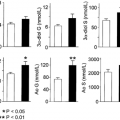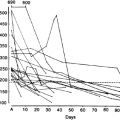TREATMENT
Part of “CHAPTER 120 – GYNECOMASTIA“
The treatment of gynecomastia depends on the underlying cause. Surgical removal of estrogen-producing or hCG-producing tumors usually is required and may be curative. Offending medications should be stopped. The treatment of any underlying systemic disorders (e.g., radioiodine for thyrotoxicosis, renal transplantation) may be helpful. Radiotherapy of the breast may prevent the development of gynecomastia in circumstances in which its occurrence can be predicted (e.g., treatment with estrogens or antiandrogens52). In severe cases of gynecomastia of any cause, particularly in boys and younger men, mammoplasty may be required (Fig. 120-5 and Fig. 120-6). Advances in surgery for gynecomastia have included new anatomic approaches (transaxillary), new instrumentation (cannulas, endoscopes), and new surgical techniques (liposuction, pedicle grafting, pullthrough procedure). Because such surgery is not completely risk-free, it is important to choose a plastic surgeon who is experienced with the procedure. In less severe cases of gynecomastia, treatment may be withheld in anticipation of spontaneous resolution (pubertal, postchemotherapy) or when it may not be appropriate (end-stage cirrhosis).
Stay updated, free articles. Join our Telegram channel

Full access? Get Clinical Tree





